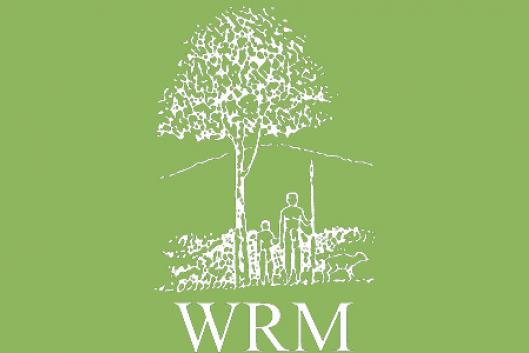Inner land in Guyana consists of a 150 kilometre wide tropical rainforest, mostly untouched. However, the official perception since the ‘70s of mining as essential for “development”, and the opening of the country’s economy --with the subsequent promotion of the exploitation of natural resources, especially timber and minerals-- to face the increasing foreign debt and satisfy the conditions of the 1991 structural adjustment programme imposed by the IMF and the World Bank, have paved the way to transnational companies. Thanks to the generous grating of huge areas for timber and mining exploitation, they are making big business and, at the same time, destroying the environment and causing severe problems to indigenous peoples (see WRM Bulletin 17).
The results of a report published last year on the impact on mining in the Upper Mazaruni Amerindian District of Guyana confirm this general assertion for a particular region of the country. The Upper Mazaruni River region is a luxurious forest which constitutes the last refuge of the Akawaio (Kapon) and Arenuca (Pemon) indigenous peoples, whose ancestral territory also encompasses parts of the Gran Sabana in Venezuela, and northern Roraima State in Brazil. Their way of living in harmony with the environment has been traditionally based on seasonal migrations between the lower and upper reaches of the Mazaruni and Kamarang Rivers to obtain their livelihoods from hunting, fishing and farming.
Since the end of the decade of 1950 indigenous peoples’ authorities of the region have been claiming to the successive governments against the invasion of their lands by miners. In 1959 one-third of the Upper Mazaruni Amerindian Reservation was gazetted as a mining district, and the remaining area renamed Upper Mazaruni Amerindian District. At the beginning they were “prokknocker” (small-scale miners), and nowadays they are powerful foreign companies. About 37 transnational mining companies --most of them Canadian-- have been registered in Guyana. Several out of them have been and are present in Upper Mazaruni. Golden Star Resources and Vanessa Ventures, both from Canada, are the ones that have caused the most environmental impact and concern to local communities.
Missile dredging (enormous vacuum cleaners shaped like missiles, that are attached to river dredges to remove alluvial deposits) is a normal practice for mining in the region. These dredges destroy river banks and nearby forests, and increase sedimentation causing severe losses in the fish populations, and drastical changes in the hydrology and the geomorphology of the river. Mining companies in Upper Mazaruni also use mercury to maximise gold production, even though it is well known since decades that mercury, both as an effluent and air emission source, provokes serious effects on the ecosystems and human health. According to the authors of the report, the environmental impacts of mining in the area are apparent: the water is discoloured and heavy with sediments, piles of debris accumulate at the river banks, some of which have disappeared because of missile dredging. Environmental Impact Assessment required by law exists only on paper.
The destruction of natural resources local dwellers depend upon has impacted on indigenous people’s every day life, especially in their provision of food. It is difficult for them to find enough fish in the once rich Mazaruni River. The noise caused by mining and unsustainable hunting by miners have provoked a decrease in the richness and abundance of game animals. The disruption of local communities' economy has gone along with the emergence of serious social problems as alcoholism, sexual abuses, prostitution and racism.
In sum, the opening of Guyana to foreign companies from the mid-1980s has caused destruction in the country’s tropical forests --a rare case of virtually untouched ecosystems until then-- and the complete disregard of the Amerindians that have lived in these forests for centuries using their resources in a sustainable way. This process continues to the detriment of Guyana’s forests and indigenous peoples, who are carrying out actions to revert such situation. What used to be a heavenly place, where local people could live according to their cultural patterns, is becoming an example of destruction. What for? For the benefit of a few megacompanies. Who are responsible? The companies themselves --that act in a depredatory way, taking profit of favourable circumstances-- and the successive Guyanese governments, which have shown to be unable to control their activities, and especially unwilling to respect and guarantee indigenous territorial rights, which is at the root of the problem.
Those interested in obtaining a copy of the above mentioned report, which includes testimonies of indigenous people, as well as pictures and maps, are invited to contact the Amerindian Peoples Association
( apacoica@guyana.net.gy ) or the Forest Peoples Programme ( info@fppwrm.gn.apc.org ).
Article based on information from: “Indigenous peoples, land rights and mining in the Upper Mazaruni”, A Report by Upper Mazaruni Amerindian District Council, Amerindian Peoples Association of Guyana, Forest Peoples Programme, Global Law Association, Nijmegem, 2000; “Undermining the forests”, FPP-Philippine Indigenous Peoples Links-WRM, January 2000; The World Guide 1997/98.
